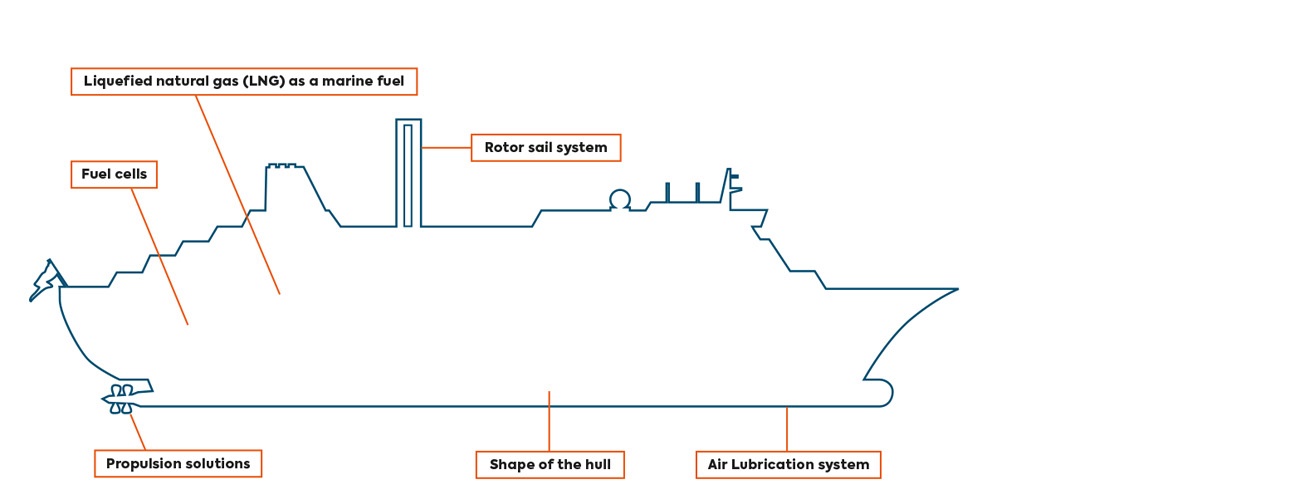This vessel is brimming with innovations
The aim is to reduce carbon dioxide emissions from marine transport by at least 50 per cent by 2050, despite the challenges presented by the increase in traffic volumes.

Marine transport accounts for about 2.6 per cent of global greenhouse gas emissions.
The International Maritime Organization (IMO) has decided that carbon dioxide emissions from marine transport should be reduced by at least 50 per cent by 2050, despite the challenges presented by the increase in traffic volumes. The key measures include improving the energy efficiency and environmental efficiency of ships, for example by using new fuels.
Finnish shipping companies are already using a number of solutions that reduce the environmental burden from ships.
The Finnish maritime industry has a turnover of EUR 8 billion, of which more than 90 per cent is connected with export products. The entire sector includes a thousand companies and 30,000 employees.
Fuel cells
– A fuel cell system will cover energy consumption during port visits, in particular. The fuel cells can use fuels such as hydrogen, LNG, methane and diesel.
Rotor sail system
– Reduces fuel consumption by 5–20 per cent, depending on wind conditions.
– An electric motor rotates a cylindrical sail, creating a pressure differential that propels the ship forward.
– During a 12-month trial period, a rotor sail system installed on a Maersk Tankers vessel reduced the vessel’s fuel consumption by 8.2 per cent on average. This is equivalent to a reduction of approximately 1,400 tonnes in CO2 emissions.
Liquefied natural gas (LNG) as a marine fuel
– Reduces carbon dioxide emissions by 30 per cent compared with heavy fuel oil.
– Cuts sulphur emissions to almost zero and reduces particle and black carbon emissions.
– The world’s first LNG-powered icebreaker was manufactured in Finland, and Finland was also among the first to build LNG passenger ships.
Waste heat recovery
– Use of engine waste heat recovery (WHR) for vessels’ air conditioning.
– In a two-year piloting period, m/s Finlandia saved 140 tonnes of fuel by using an absorption cooling system. This reduced emissions by 430 tonnes.
Propulsion solutions
– Innovative propulsion solutions can reduce emissions by 5–15 per cent.
Shape of the hull
– Optimised use of flow calculations can help in designing a hull with reduced resistance.
Air Lubrication system
– Generating a layer of air bubbles beneath the hull reduces frictional drag and water resistance and thereby decreases fuel consumption and emissions.